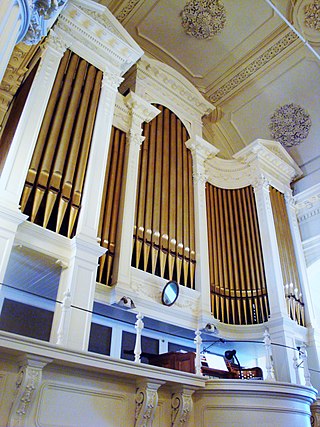
Aeolian-Skinner Organ Company, Inc. of Boston, Massachusetts was an American builder of a large number of pipe organs from its inception as the Skinner Organ Company in 1901 until its closure in 1972. Key figures were Ernest M. Skinner (1866–1960), Arthur Hudson Marks (1875–1939), Joseph Silver Whiteford (1921-1978), and G. Donald Harrison (1889–1956). The company was formed from the merger of the Skinner Organ Company and the pipe organ division of the Aeolian Company in 1932.

Casavant Frères is a Canadian organ building company in Saint-Hyacinthe, Quebec, which has been building pipe organs since 1879. As of 2014, the company has produced more than 3,900 organs.
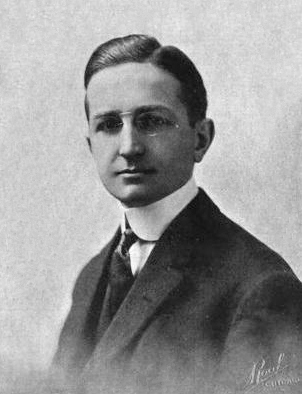
Ernest Martin Skinner was an American pipe organ builder. His electro-pneumatic switching systems advanced organ-building technology in the first part of the 20th century.
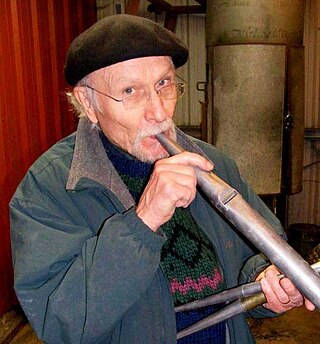
John Burlin Brombaugh is an American pipe organ builder known for his historically oriented tracker action pipe organs.

Austin Organs, Inc., is a manufacturer of pipe organs based in Hartford, Connecticut. The company is one of the oldest continuously-operating organ manufacturers in the United States. The first instruments were built in 1893 with the Austin Patent Airchest, and many remain in fine playing condition to this day.
E. and G. G. Hook was a pipe organ designing and manufacturing company, located in Boston, Massachusetts, which operated from 1827 to 1935. It was started, and originally run, by brothers Elias and George Greenleaf Hook.
The Wangerin Organ Company (1912-1942) was a manufacturer of pipe organs based in Milwaukee, Wisconsin. It was a continuation of the company after the partnership of Adolph Wangerin and George J. Weickhardt, Wangerin-Weickhardt, ended with the death of Weickhardt in 1919. It had previously also been known as the Hann-Wangerin-Weickhardt company. Many of its organs are still played in churches today.
The Felgemaker Organ Company was a manufacturer of pipe organs based out of Erie, Pennsylvania, in the late 19th and early 20th centuries.
Orgues Létourneau Limitée of Saint-Hyacinthe, Quebec is a prominent Canadian builder and restorer of pipe organs. The company was founded in 1979 by Fernand Létourneau, who served as president, owner and artistic director of the firm until 2019. In 2019, Fernand Létourneau sold the company to a long-time employee, Dudley Oakes.

The Holy Trinity Catholic Church Rectory and Convent in Bloomington, Illinois, USA, has been listed on the National Register of Historic Places since 1983. The Rectory and Convent Building is situated behind the art deco church on the site of the 1869 Holy Trinity Church, which was destroyed by a tornado before it was completed. A fire obliterated the church in 1932, but the church was financed, and recovery was quick. The finished Art-Deco building was completed in 1933 and opened in 1934. It still stands today.

The Basilica of Saints Peter and Paul in Lewiston, Maine, also known as Ss. Peter and Paul Church, is a church which is a part of the Roman Catholic Diocese of Portland.

Lovely Lane United Methodist Church is a historic United Methodist church at 2200 St. Paul Street in the Charles Village neighborhood of Baltimore, Maryland, United States.
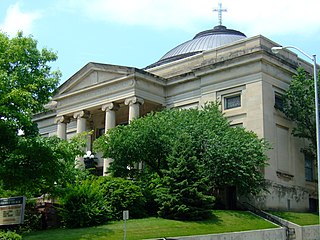
First United Methodist Church is located in downtown Des Moines, Iowa, United States. It has been listed on the National Register of Historic Places since 1984 as First Methodist Episcopal Church, which is its original name.

Trinity United Methodist Church is located in Des Moines, Iowa, United States. It was listed on the National Register of Historic Places in 1998 as Trinity Methodist Episcopal Church, which was its previous name.

Olympic Organ Builders was an importer and custom fabricator of tracker action pipe organs in Seattle, Washington from 1962 through the 1970s. The company built approximately 25 organs for churches and schools located the Puget Sound and Eugene Oregon in the period from 1967 through 1970.
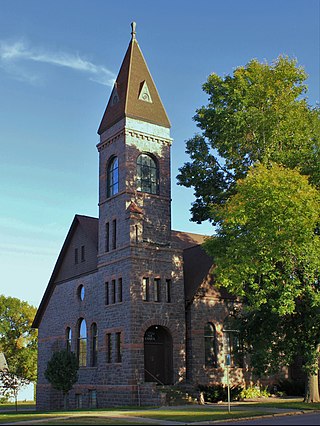
Rock Rapids United Methodist Church, formerly known as First Methodist Church, is located in Rock Rapids, Iowa, United States. The church building is significant for the use of blue-gray and red granite used in its construction. It was designed by Sioux Falls, South Dakota architect Joseph Schwartz utilizing the Richardsonian Romanesque style. Completed in 1896, it is the second church building for a congregation founded in the 1870s. The blue-gray granite quarried near Sioux Falls is the main building material, and it is laid in a random ashlar pattern. The red granite was acquired from the receiver of a bankrupt packing plant which had begun, but did not complete, a new stone building. It is used for the trim, especially in the voussoirs of alternating colors. The building also features a tall corner bell tower. The pipe organ was ordered from the Hinners Organ Company of Pekin, Illinois in January 1905 at a cost of $1,960. An addition was added to the south side of the church in 1966. The church was added to the National Register of Historic Places in 1978.

St. Matthew's Cathedral is an Episcopal cathedral located in Laramie, Wyoming, United States. It is the seat of the Diocese of Wyoming. The cathedral is a contributing property in the St. Matthew's Cathedral Close, a historic district listed on the National Register of Historic Places.
Henry Berger was an American prolific organ builder. He was based in Baltimore, Maryland.

Henry Niemann was a German-born pipe organ builder, who spent most of his career in Baltimore, Maryland. Of all the Baltimore organ builders, Niemann produced the most extant organs, some still in very good condition and retaining the tonal essence of his work. His organs were respected for their bold sound, fluid mechanisms, and quality construction
















